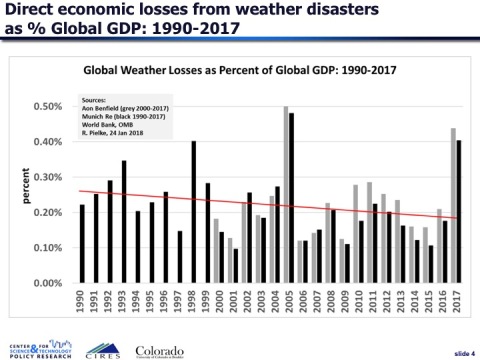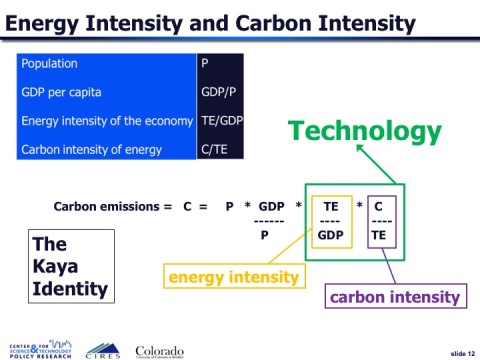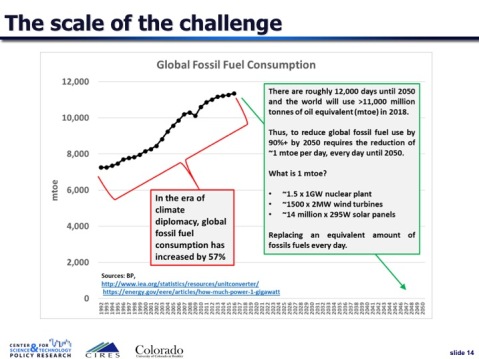
Welcome to issue #11 of my occasional newsletter on climate and energy issues. As a reminder, my day-to-day research and teaching is focused on sports governance and various issues of science policy. But I’ve written a fair bit on the topics of climate and energy over the past 25 years, including two recent books and a boatload of academic papers.
So caveat lector!
A few things to say up front:
- If you appreciate the perspective, consider the tip jar to your right.
- These funds continue to help me defray the costs of several trips where I have had the chance to develop and present new talks. I am unfunded on this topic.
- As such, contributions are much appreciated and put to professional use.
- If you don’t like what I write or don’t like me, then don’t read it – no big deal, I’m just a professor with a blog.
- If you’d like to engage, consider a comment, Tweet @ me (@rogerpielkejr) or send an email. I am happy to discuss or debate. I’ve had great feedback on these newsletters.
- Social media warning: I’m happy to engage with anyone, but if you choose to tone troll me, call me names or lie about me, oh-so-common in discussing climate, then you will be muted or ignored. I am blocked on social media by some academics and journalists in the climate area (e.g., Mann, Hayhoe, Brulle, Mooney, Gillis …) and if the views I present are too disturbing, there is always that option. It’s OK, such action by professionals says more about the blocker than about my views.
- Also, if you have a pointer or tip on climate science or policy, please send that along as well. Anonymity guaranteed for those who want it.
- Lastly, thank you for reading!
With that . . .
7 Things Everyone Should Know About Climate
Last week in Tokyo I participated in the 3rd Annual IEEJ/APERC Joint International Energy Symposium. The large conference is great for me because I get to learn a lot from experts in global energy. I also had a chance to give a talk.
My talk focused on seven things that I believe everyone engaged in climate policy should know about the issue. In a longer talk I could have listed 20 things and a shorter one 3. And there is of course valid debate about what might be considered most important, but these are the seven I presented this week. I welcome comments, questions, critique.
- Here are the seven things summarized, and below I’ll say a bit about each.

- Economic damage from weather disasters as a proportion of global GDP has decreased since 1990

The reduction of direct economic losses from disasters as a proportion of global GDP has been highlighted as a policy indicator by the UN under its SDGs. So it is important to track and understand. Below are data for weather disasters (i.e., no earthquakes, tsunamis in particular).

More detail on this graph and the science behind it, including data and peer-reviewed research can be found at this post. When I share this data I hear expressions of surprise and, not infrequently, even shock. This data shows good news. We should understand why the trend is occurring and how we might keep it going.
- Climate impact studies favor an extreme, implausible scenario for the 21st Century (RCP 8.5)

Readers here will know that I’ve discussed this issue extensively. The issue here is that not RCP 8.5 is being used, it is that the scenario is often characterized as business-as-usual or a likely future, when it is in fact an extreme outlier. As an extreme outlier it should not be the most commonly used scenario in climate impact models (below, upper left graph).
RCP 8.5 also dominates media and policy discussions of climate impacts. This over-representation, I hypothesize, is an important reason that many people are surprised to learn that weather disasters are decreasing as a proportion of GDP. A steady diet of “climate porn” is sure to warp one’s views about what is actually happening. Here are just a few recent headlines originating in RCP 8.5 climate impact studies. I’ll discuss this issue in more depth in a forthcoming paper.

- Almost all stabilization scenarios of IAMs used by the IPCC depend on the wide deployment of technologies that do not exist (BECCS)

This point cannot be emphasized too strongly, and I have a forthcoming paper that will discuss this issue further. The Paris Agreement target of well-below 2.0 degrees C that nations have committed to achieving depends upon a policy option found in science fiction. If there ever was an “Emperor’s New Clothes” moment in climate policy (and there are many candidates), this is it. Some experts have been raising this issue, Oliver Geden and Glen Peters among them, but the essential role of BECCS in climate policy scenarios still does not have wide understanding in climate policy discussions. It should.
- There is little evidence that climate policy since 1992 has influenced global decarbonization rates (CO2/GDP)

If you really want to understand climate policy (as related to carbon dioxide), then you need to understand the Kaya Identity. My book on climate policy, The Climate Fix, centers on the Kaya Identity and explains why it is so important and powerful. It is summarized above, which shows that a reduction in the ratio of carbon dioxide emissions to GDP is decarbonization. Success or lack thereof in carbon policies should focus on this metric and not simply emissions.

The data above, which comes from the International Energy Agency (historical) and PwC (future), comes as a surprise to many people. It shows that decarbonization rates have not changed from before the climate policy era (1971-1992: 1971 is the start of the IEA dataset and 1992 is the year of the Rio Convention) to after it began (measured as after Rio 1992 or after Kyoto 1997). Here are data for individual countries and the world since 2000. Each nation has its own story, which can be spun as more or less successful. But if we are being honest with ourselves, none is remotely close to what is needed according to the targets that these countries have putatively agreed to meet.

After my talk last week several people commented along the lines of, “Yes decarbonization has not increased, but climate policy has done X, Y or Z …”. This is true. Climate policy has led to many outcomes. But we also need to understand that influencing the rate of decarbonization of the global economy is not among those outcomes. This is hard medicine to swallow, as the needed rate to achieve the targets of the Paris Agreement are more than four times faster than what has occurred over most of the past half century. What we are doing is not working and claims that success is just around the corner are just not believable.
- The most important lever for deep decarbonization is carbon intensity (CO2/TPES)

The mathematics of deep decarbonization of the sort envisioned under the Paris Agreement are really very simple. The world needs to source >90% of its energy consumption from carbon-free sources by sometime this century. This needs to be earlier depending on how stringent a concentration target (e.g., 450 ppm) is desired to be met. The 90%+ level of carbon-free energy is completely insensitive to how much energy is ultimately consumed. In technical terms, whatever is done on energy intensity (of GDP) success will be a function of progress in carbon intensity (of energy). This is just math. Don’t just take my word for it, do the math yourself.
The Kaya Identity again explains why carbon intensity is so important. Elsewhere I’ve explained why using GDP as a lever to accelerate decarbonization is not going to happen, the so-called Iron Law of Climate Policy.

So how is the world doing on carbon intensity and energy intensity? Have a seat and look at these data from IEA.

Thee data clearly explain the lack of progress in overall decarbonization: energy intensity decline, a good thing indeed, has proceed at more-or-less a constant rate since 1971. Carbon intensity hasn’t much budged — remarkably, carbon intensity in 2015 was the same as it was in 1985. The last time carbon intensity declined was during the era of the rapid expansion of nuclear power in the 1970s. On the figure above, carbon intensity in 2015 sits at about 100 (with 1990 = 100); meeting the target of the Paris Agreement requires that it fall to below 10. Again, just math.
Here is another way to quantify the size of the challenge in somewhat less abstract terms.

- US Climate policy is subject to dramatic shifts because, since the 1990s, US climate policy has occurred via executive action rather than Congressional legislation

This point is mainly for an international audience, but should also be appreciated in the US. It is my firmly held view that the US will be incapable of substantially accelerating decarbonization rates over many years or decades until it is able to secure broad, bipartisan Congressional support for that goal. The alternative will be the political whiplash and inconsistencies observed since 1992, with the occasional surprise (hey, shale gas!). A short-termist perspective tends to reinforce the partisan nature of the US climate debate as activists rush to reverse the most recent executive action (e.g., Keystone pipeline) via electoral victories rather than do the hard work of building a meaningful, bipartisan coalition that is robust to the inevitable political swings. I am not too optimistic that this will change any time soon.
- The IPCC does not serve as an “honest broker of policy alternatives” — but it should

If you get the sense from the slides above that the world is not doing so great on climate policy, you’d be correct. In such a situation we might think that we’d be engaged in an intensive search for new alternatives, new options to break out of the current state of poor performance. You’d think, huh?
The IPCC is important and if it didn’t exist we’d have t invent it (as I explained to the US Congress last year), but its role in policy is less helpful than it might be. The IPCC should encourage the exploration of possibilities, the opening up of policy debate and discussion and the introduction of new possibilities into politics. Instead, the IPCC serves to reinforce the very policies that are not succeeding (e.g. BECCS!) and in doing so, actually promotes the status quo. Working Group 3 (or a new Working Group 4) should explicitly discuss policy options. Without good alternatives, we will go exactly where we are headed.
- So that is it. Here the seven things everyone should know about climate policy and how you can learn more. Feel free to comment below on this post or via Twitter @rogerpielkejr.



Very nice summary Roger. As always we must admit we have a huge policy problem before any action can be taken.
LikeLike
Reblogged this on Utopia – you are standing in it! and commented:
US climate policy has occurred via executive action rather than Congressional legislation
LikeLike
Roger, understand your point about climate impact studies typically using an extreme scenario (8.5), but since you cite the low rates of decarbonization, non-existent technology, and other limited progress in addressing the problem, shouldn’t a more extreme scenario be used until we start seeing progress. In your view, which scenarios should we focus on and why?
LikeLike
I’ll have a long paper out on exactly this topic before the end of the month … Stay tuned.
LikeLike
From the above: “The mathematics of deep decarbonization of the sort envisioned under the Paris Agreement are really very simple. The world needs to source >90% of its energy consumption from carbon-free sources by sometime this century. This needs to be earlier depending on how stringent a concentration target (e.g., 450 ppm) is desired to be met”.
I’ve never understood the claim that we need >90% from carbon-free sources. To my knowledge it is agreed that only half of what we emit ends up increasing the atmospheric CO2 concentration, the rest is absorbed by oceans and/or biosphere. Shouldn’t this mean that, once we reduce our emissions to just 50% of current ones, CO2 will stop increasing? The ammount that both oceans and biosphere absorb is not related to how much we emit but to how much there is. If we reduced what we emit to half, all of it would be absorbed.
LikeLike